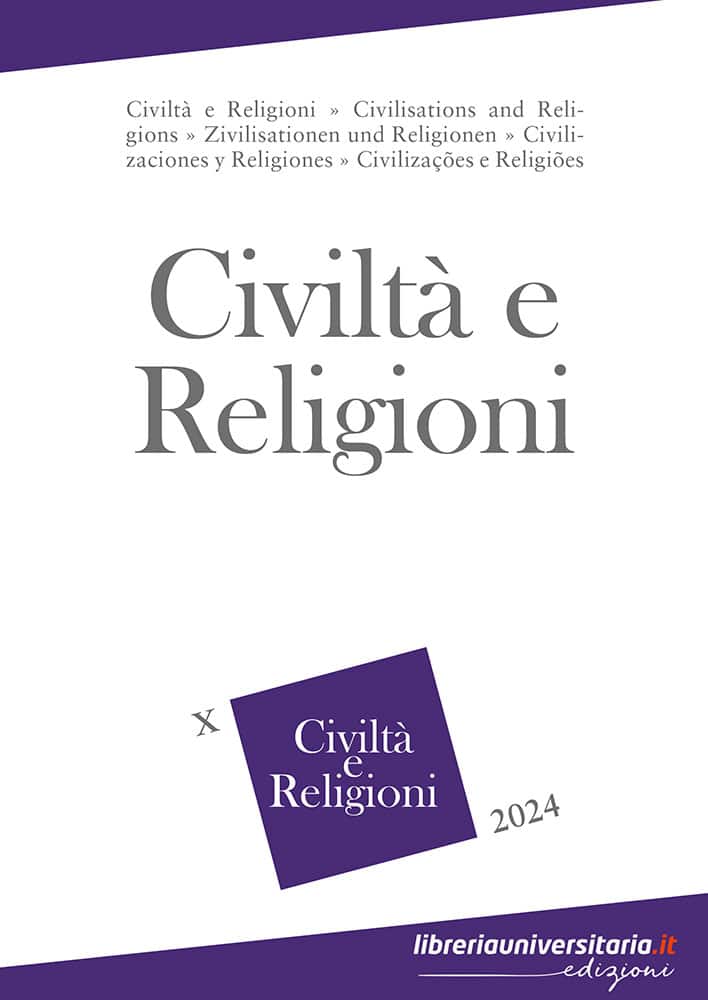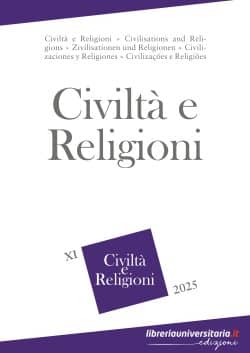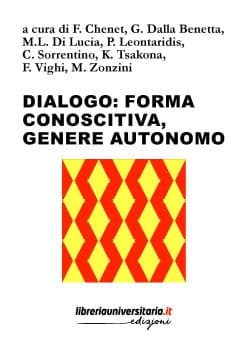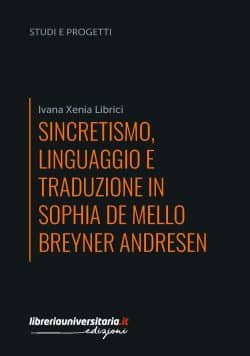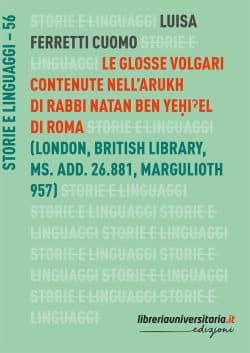Indice
a cura della Redazione di Civiltà e Religioni
While Phaéthōn, son of Hḗlios, riding the celestial chariot of his father, risked destroying the earth, so that Zeus had to kill him, the Avestan demon Snāuuiδka, still adolescent, threatens to destroy the cosmos if only he could become an adult and take possession of a cosmic chariot with which he would like to yoke the two primordial twin spirits, Spǝṇta Mainiiu and Aŋra Mainiiu. Finally, he is killed by the Zoroastrian hero Kǝrǝsāspa to prevent future disasters. These different mythological cycles curiously present some parallel points of comparison: two extraordinary boys are the protagonists in these stories, both try to ride a chariot of cosmic power, and both could be potentially involved in a disaster or ready to produce a cosmic catastrophic event. Finally, both are killed by a god or by a powerful hero. This article, beyond the framework of an earlier debate about the Eastern motifs of Phaéthōn’s myth, tries to investigate the peculiar characteristics of certain common motives concerning the typology of the adolescent trickster or the arrogant intruder.
A Phoenician inscription found in Larnaka (Cyprus) in 1990 records the offering of a trophy to the god Baal Oz, “Lord of Strength”. The object was dedicated by Milkyaton, king of Kition and Idalion, during the first year of his reign (392/391 BCE). The offering followed the victory that was won – granted by the god, as the epigraph states – over certain enemies (who are not named in the text). Quite apart from its importance for the reconstruction of the eventful history of Cyprus, the document is undoubtedly of interest since it represents to date the only attestation of the onomastic formula b‘l ‘z. The objective of these notes is therefore to re-examine the inscription as a whole in an attempt to frame historically the figure of Baal Oz and to recognize some of the mechanisms through which divine qualifiers were “constructed” in the Phoenician context.
Practices for long life between medicine and religion in the ninetieth chapter of the Blue Beryl
This paper intends to analyze a series of chülen (bcud len) recipes and mendrub (sman sgrub) practices that are to be found in the ninetieth chapter of the Sangye Gyatso’s Blue Beryl (Bai ḍūr ya sngon po), the most authoritative exegetical source devoted to Four Tantras (Rgyud bzhi), the canon of the Tibetan medical tradition. The specific study in this chapter aims to present how deep-rooted is the link between the medical tradition and the Buddhist religion in Tibet. In this case, medicinal preparation techniques and meditative visualisation practices result in the realisation of the nectar (bdud rtsi): medicine with benefits for obtaining a long life. A structured presentation of the chapter’s topics would provide precise knowledge of the thematic content, stylistic structure, the author’s purpose and his connection with the Nyingma tradition.
This essay considers the relation between the Catholic faith and sovereignty in the construction of Elias Ashmole’s public persona. Its aim is twofold. First, it shows that the absence of any reference to Ashmole’s interest in Catholicism from his so-called autobiographies is directly related to the link between social success and membership of the established Church in early modern England. Secondly, and by contrast to the previous point, the presence among Ashmole’s papers of a number of early prints about the Catholic devotion to the Holy Heart of Jesus strongly suggests the antiquary’s interest in Catholic theology. His strong patriotism, however, along with his will to rise socially, explain the reasons for staying in the Anglican Church. From a historiographical point of view this essay fits in with the recent works by John Morrill, Anthony Milton and Alexandra Walsham, while positioning itself against Jesuit historiography, whose aim is to portray as true Catholics only those British people who chose martyrdom for the political powers of the Pope. Ashmole’s case study, on the other hand, illustrates the existence of a category of English Crown’s subjects who, despite their theological affinities with (when not downright beliefs in) Catholic theology, opted for the Church of England, because the Roman insistence on the Pope’s political powers left them with no other choice. They believed that their country’s sovereignty would guarantee their freedom and social rise. This implied the will to live their faith in an intimate manner, and not nicodemistically, as Catholic historians have argued so far.
Nām simran: remembering the divine Name. An ethnographic look at Sikh meditative practice
Nām simran, translatable as ‘remembering the divine Name’, is the meditative practice of Sikhism. In its most common form, it is undertaken through the repetition of the Gurmantar, ‘Vāhigurū’, one of the main divine epithets. This practice plays a central role within the gurmat: in its simplicity, it guides the believer towards overcoming his ego and along the realisation of the divine immanence in all things. This contribution is intended to illustrate the preliminary results of the ethnographic research I am conducting on the Sikh meditative practice in Italy. The presentation of the doctrinal principles underlying Nām simran is followed by an exposition of the testimonies collected by me during the field research at the Gurdwara Dasmesh Darbar in Casalecchio di Reno (BO), began in 2022 and still ongoing. The interviews resulting from this ethnographic research allowed me to capture and highlight the value and meanings that believers attribute to simran.
We propose to produce a regressive study (from present to past) of the Presidio ‘Nuovo Ospedale Regina Margherita’ inaugurated on the remains of the Benedictine complex installed in the early Middle Ages, likely over a pre-existing monastic institution of the fifth or sixth centuries.
The first section will place the hospital and its religious architectural origins in the urban and town-planning evolution of the Trastevere district, starting from the redevelopment of Piazza San Cosimato in 2009 back to the 16th century, thanks to the study of historical cartography. The second section will focus on the reconstruction of the material history, tracing the recycling, remodelling, destruction and reconstruction of the various secular (public hospital, hospice, part in cinema) and monastic phases from the Benedictines to the Clarissans circa 8th century to the 19th century. The third section describes the current perception of the area, reconstructing the material history and memory which characterise the space.
This essay aims at analysing some theoretical aspects of religious tourism, understood as a specific form of ‘cultural tourism’, by an anthropological approach. The purpose is to demonstrate that religious tourism is not only the meeting point between religion and tourism, but it is also inextricably linked to heritage processes. Situating religion and tourism in the spheres of human mobility, globalization, capitalism, and heritage building processes, the article is mainly based on a theoretical analysis, but also aims to support some observations with ethnographic material, albeit briefly presented, drawn from my fieldwork between Italy and Tunisia, and quick references to case studies borrowed from the anthropological literature inherent Mediterranean context.
Elisabetta Moro intervista Homi Bhabha

